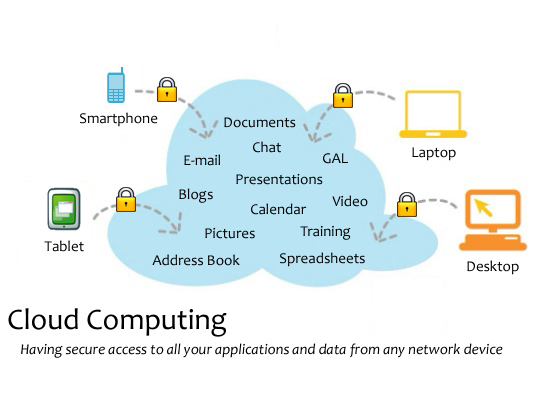Confused over what technologies to embrace this year? The buzz on tech trends for the coming year point at cloud computing, mobility, virtualization, and a slew of other technologies. Tech business priorities focus on improving productivity, followed by reducing operational costs, and improving customer service.
The top ‘10 Strategic Technology Trends for 2012’, according to Gartner, the world’s leading information technology research and advisory company covered everything from increased use of media tablets, to the explosion of mobile-centric applications (predicting 70 billion available apps by 2014), through to ‘Big Data’ challenges, next-generation analytics capabilities and social networking.
The Mobile Age. With the Smartphone now ubiquitous–and the tablet gaining ground–SMEs will begin mobilizing their core business applications en masse in 2012. While email and other collaboration tools might already be second-nature for mobile users, areas such as mobile payments, time tracking, and field service apps should see increased adoption. The possibilities of what we use our Smartphone’s for now are endless and very naturally at the forefront of all trends. While iOS dominates the tablet market today, Gartner says it expects iOS/Android will dominate the market with 80% of tablets shipped by 2015.
- Mobile Interfaces. The user interface (IU) paradigm is changing to adapt to mobile-centric interfaces emphasizing touch, gesture, search, voice and video. HTML5 – the fifth iteration of the HTML standard lets developers create richer, more interactive applications than ever.
- Mobile Apps. Apple and Android provide hundreds of thousands of mobile apps to mobile users. This is expected to grow from consumer-only phenomena to an enterprise focus.
- Location marketing. Listing on Foursquare or Google Places, location marketing is becoming an increasingly important part of doing business.
Internet of Things. The Internet of Things (IoT) is a concept that describes how increasingly consumer devices will connect to the Internet with the technologies for identifying, sensing and communicating. Key elements of the IoT include:
- Embedded sensors: Sensors that detect and communicate changes are being embedded, not just in mobile devices, but in an increasing number of places and objects.
- Image Recognition: Image recognition technologies strive to identify objects, people, buildings, places logos, and anything else that has value to consumers and enterprises. Smartphones and tablets equipped with cameras have pushed this technology from mainly industrial applications to broad consumer and enterprise applications.
- Near Field Communication (NFC) payment: NFC allows users to make payments by waving their mobile phone in front of a compatible reader. Once NFC is embedded in a critical mass of phones for payment, industries such as public transportation, airlines, retail and healthcare can explore other areas in which NFC technology can improve efficiency and customer service.
Move to Cloud Computing. It’s the best fit for SMEs. Basically, cloud computing means that applications, files and documents reside in an offsite data centre, not on your computer’s hard drive, and you and your employees can access them via the Internet, anytime and anywhere. Advantages include:
- Cost savings. You eliminate the need for a costly infrastructure and, depending on your budget and needs, can pick and choose the services you want to outsource. You can increase or decrease the amount of storage required to match your stage of business and you aren’t purchasing servers that are under-used when you install them, then overburdened as your business expands.
- Security. Contrary to concerns of data security with cloud computing, good providers offer better security and privacy than most SMEs have internally because they have 24/7 monitoring, management and reporting features that many companies might not otherwise be able to afford. In addition, data stored in a cloud does not suffer fire damage or theft.
Social Enterprise. Enterprises will be driven by social media with increasing ease of access, allowing businesses to produce, find and convey information more effectively. However, businesses must ensure their social media campaigns are tailored to suit not merely the clients’ needs, but also the platforms. The seamless integration of social media with Smartphone’s further adds urgency to adapt all corporate communications to this platform.
Gamification. Broadly speaking, gamification aims to integrate game dynamics to a website, online content or campaign in a bid to drive participation and, ultimately, awareness of your brand. The idea is to add gaming elements to tasks and processes that are ordinarily tedious to consumers. Technology research company Gartner predicts gamified services will become as important to companies’ marketing departments as Facebook or Twitter.
Rather than becoming overwhelmed with all that technology offers – and is likely to offer – take a good look at the services that will benefit your small business the most. The trick is to use technology to your advantage.




